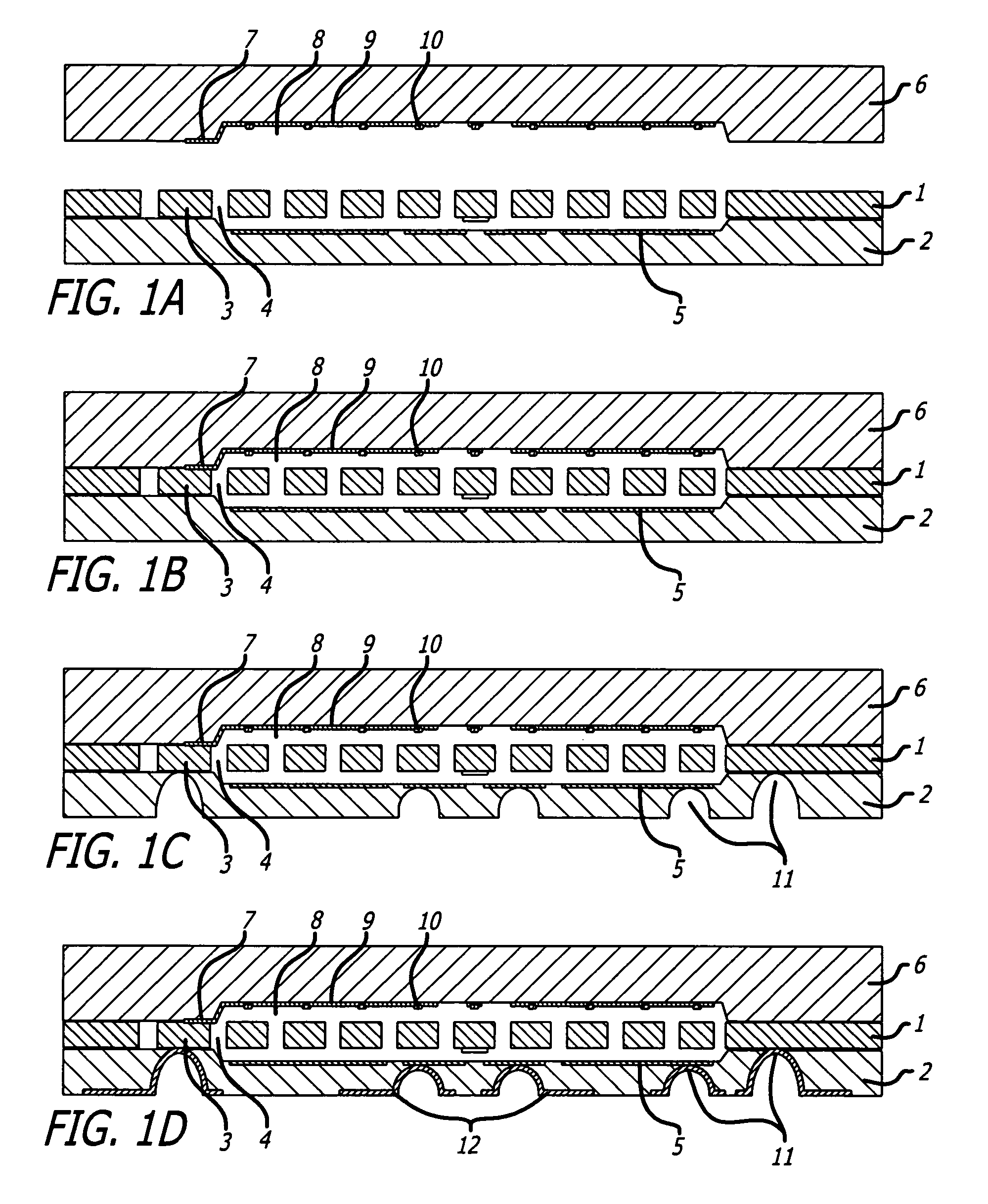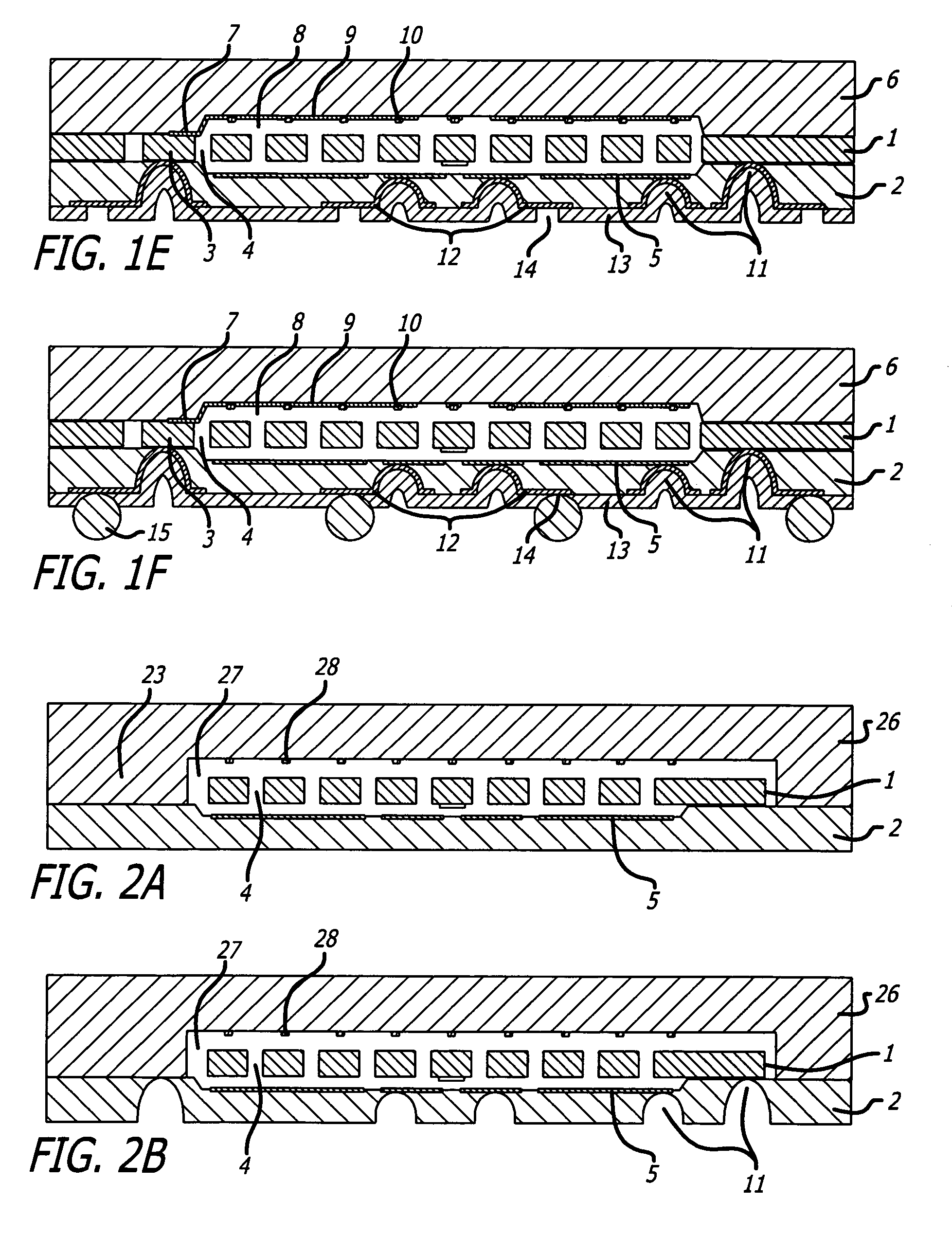Wafer level packaging process
a packaging process and wafer technology, applied in the direction of brassieres, semiconductor devices, semiconductor/solid-state device details, etc., can solve the problems of increased difficulty/cost of the via process, large parasitic capacitance, cross-talk and substantial interconnection resistance,
- Summary
- Abstract
- Description
- Claims
- Application Information
AI Technical Summary
Benefits of technology
Problems solved by technology
Method used
Image
Examples
first embodiment
[0020]the invented wafer level package fabrication process is illustrated in FIGS. 1a through 1f. The DEVICE 1 to be packaged may be a MEMS device, an integrated circuit or some other device, hereafter simply a DEVICE, normally of silicon, mounted on a substrate 2 (e.g., in this embodiment, glass), as shown in FIG. 1a. The electrically conductive regions to lead outs 5 can be, by way of example, doped silicon, metal, an alloy layer or stack on substrate 2 or DEVICE 1 or both, or a combination of such materials. As shown in FIG. 1b, the outer surface of DEVICE 1 can be bonded with another glass cap wafer 6. The bonding surface can be formed by either a fine polishing after thinning (e.g., grinding, milling or etching) of the DEVICE layer 1, or an etch stop layer buried in the original DEVICE substrate, or a fine control of the DEVICE layer thinning process, or just planar processes on substrate 2. Isolated conductive island 3 is formed by a DEVICE layer etch process where through tre...
third embodiment
[0029]this invention is illustrated in FIGS. 3a through 3h. In FIG. 3a, a DEVICE wafer 101 bonded with a cap wafer 201 with a cap gap 203 is the starting material (FIG. 3a). On DEVICE wafer 101, metal pads 106 are located on top of an optional dielectric layer 104 as usual. DEVICE structure 103 and optional passivation layer 102 are on top side of the wafer. Optional thin metal feed-through 105 is led out to the bonding interface where optional cap electrode 202 is led to and electric connection is made by press-on bonding of metals. A DEVICE wafer 101 backside thinning is optionally performed prior to via processing.
[0030]The via process starts with backside holes 107 formed in the DEVICE substrate wafer as shown in FIG. 3b. If DEVICE wafer 101 is silicon, this can be done by a masked etch including deep reactive ion etch (DRIE) or an anisotropic etch (e.g., KOH or TMAH etch). In the case of a glass DEVICE wafer 101, this can be a combined process of etch / drill / mill / water jet / sand ...
PUM
 Login to View More
Login to View More Abstract
Description
Claims
Application Information
 Login to View More
Login to View More - R&D
- Intellectual Property
- Life Sciences
- Materials
- Tech Scout
- Unparalleled Data Quality
- Higher Quality Content
- 60% Fewer Hallucinations
Browse by: Latest US Patents, China's latest patents, Technical Efficacy Thesaurus, Application Domain, Technology Topic, Popular Technical Reports.
© 2025 PatSnap. All rights reserved.Legal|Privacy policy|Modern Slavery Act Transparency Statement|Sitemap|About US| Contact US: help@patsnap.com



